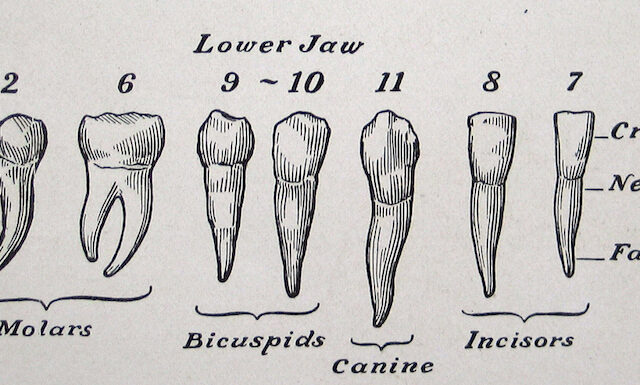Due to the ambiguity accompanying healthcare, hospitals face multiple challenges concerning successful and effective patient treatment. From keeping records of patients to enhancing the administration of a particular medical facility, the right software solutions should make a difference. This article examines different types of software that may be of great help to hospitals since it is possible to say that the application of such programs will enable institutions to pay more attention to the provision of beneficial experiences to the clients, increased efficiency of work, and better healthcare services.
Patient Management Software
The idea of handling patients is still the main principle of any hospital’s functionality. Healthcare IT also helps in the enhancement of the whole section right from the admission of a patient to the scheduling of the treatment to the discharge and follow-up and so on. They include EHRs which facilitate the accessibility of information and the timely updating of the patient’s records. Several organizations have focused their attention on integrating all the channels of medical information that patients own and are easily accessible to the practitioners tasked with their care.
Electronic Health Records (EHRs)
EHRs are electronic analogs to paper medical records for a patient. EHRs also assist in the management and sharing of patient records with legitimate healthcare practitioners. This can be achieved by ensuring that the healthcare professionals involved always have access to the patient’s medical history, allergies, medications, and test results when they are required to facilitate the right diagnosis and appropriate treatment approach. EHRs also minimize the risk of failure associated with illegible handwriting or misplaced paper charts and, therefore, they can be helpful in the provision of safe care for the patients.
Telemedicine Solutions
The impact of telemedicine software on associated healthcare services has also been altered as the software is used for conducting online consultations and transferring some relevant information and treatment. Such solutions allow patients to seek advice from medical specialists while seated at home instead of having to physically travel to hospitals that may expose them to risks of contracting hospital-acquired infections. Telemedicine software facilitates the organization of direct communication, video communication, the transfer of medical information, and other forms of control – the care of patients with chronic diseases or difficulties in access to a doctor in some areas.
Hospital Information Systems (HIS)
Hospital Information Systems (HIS) may be defined as large-scale systems that support most of the critical functions in a hospital ranging from patient records management to financial information to human resource management to material management. HIS solutions standardize and simplify these processes and thus improve organizational efficiency, eliminate bureaucratic rules, and promote the optimization of resource use. Moreover, HIS systems typically include such functions as analytics and reporting that can generate necessary data and analyses for efficient decision-making and improvement.
Patient Feedback Software
Patient satisfaction is a primary concern for any hospital and therefore the correct use of the software for collecting feedback is a worthwhile requirement. Such solutions help hospitals to collect patients’ feedback immediately, detect problems, and mitigate the issues crucially. Hospitals that pay attention to their patient’s experiences and address underlying issues will improve patient satisfaction, gain trust, and engage meaningfully with their communities.
A good example of patient feedback software is “PatientVoice” which provides an effective mechanism for the collection and analysis of patient feedback via survey questions accompanied by ratings and open-ended responses. Dashboards and reporting capabilities offered by PatientVoice help hospitals understand the ‘mood’ of patients and plan improvement initiatives.
POS Systems and Supply Chain Management Solutions
Having proper inventory control and management over the supplies and equipment in a hospital is vital to making sure that the hospital always has the supplies and equipment it needs to provide care. There are several software applications available in the market in this domain that facilitate hospitals to manage purchases and stock efficiently, better monitor their stocks, and ensure optimum and minimum levels of wastage. Such automation of these processes will reduce the cost incurred by the hospitals, incidences of stock-outs, and enhance access to these resources when needed in the provision of healthcare.
Laboratory Information Systems (LIS)
Laboratory information systems are also considered to be specifically required for the management of the laboratory information and the specimen and the test information. These systems aim to facilitate the entire process from obtaining a specimen and labeling it to performing tests and reporting results. The LIS solutions increase efficiency, minimize errors, and accelerate the process of delivering test results that aid physicians in faster diagnoses and management of health issues.
Clinical decision support systems (CDSSs)
Healthcare decision support systems are computerized systems designed to assist clinicians in patient care. These systems involve order, evidence-directed, and patient-directed clinical decision support along with data about potential diagnoses and therapy including drug dose decisions. The application of CDSS in hospitals will assist hospitals in increasing the quality of diagnosed conditions as well as reducing medical errors and enhancing the management of patients.
Service Delivery and Staff Management Applications
Maintaining and managing hospital staff is crucial for hospital chiefs and university hospital leaders to attract and utilize their hospital’s healthcare staff. Tailored HR software such as ATS, Rostering & Time & Attendance, Performance Management, Training, LMS, Records, etc. performs tasks relating to hiring and selection; rostering and timekeeping; performance management; training and development; and employee recordkeeping. Such software is easier to use and helps in adhering to the rules, eliminates the paperwork that can be costly and time-consuming in hospitals, and also leads to the establishment of a more involved working environment.
The Danish Market for Network and Information Security Services
At present when society is more and more oriented to the Internet and information technologies, organizations including hospitals are not able to ignore the problem of confidentiality and security of the information about their customers. Data security tools are of huge importance to avoid any form of mishandling of the data in the face of hacking attempts or other threats. Such solutions apply encryption, access controls, activity auditing, and other capabilities to ensure and guarantee confidentiality, integrity, and availability of the patient health information and other organization’s data.
Integration and Interoperability
Nevertheless, every specific program aims at performing specific functions, while modern business cannot be conducted without integrated platforms when all such products work on the same data and interact with one another. There is also ease of communication when the various applications systems have been integrated, this means there is ease in sharing information which also saves time for duplication of information entered into the system. There will also be modification of hospital functions to incorporate industry standards and protocols so that regulation of software solutions is expected to work in a way that all software solutions have to work together in an integrated manner to deliver software solutions that are right for the hospital management as well as the healthcare workers and the patients.
Conclusion
In the contemporary environment, healthcare institutions such as hospitals need to adopt sophisticated and innovative software systems to improve their competitive edge, as well as patients’ experience and care quality. From maintenance of patient charts and medical records to warehouse control and network security, there is quality hospital management software available for just about everything in the hospital setting. Through the use of these innovations, hospitals will be able to achieve efficiency and excellence in services which directly translate to positive results for the customers which are the patients.
How to make use of patient management software in hospitals?
The Electronic Medical Records solution is meant to optimize the process from the time the patient is admitted to the hospital till the time he is discharged. It helps hospitals to keep the complete EHR of patients, book appointments, EHR of bills & coordinate among the healthcare providers. These solutions ensure that there is coordination and centralization of the patient’s data resulting in efficiency reduction of errors and the patient experience improvement.
What are the advantages of Electronic Health Records (EHRs) that hospitals can obtain?
EHRs offer numerous benefits for hospitals, including EHRs offer numerous benefits for hospitals, including:
- Timely availability of patient-integrated health data for healthcare professionals.
- The number of medical errors due to poor handwriting or misplaced charts has been reduced.
- The key recommendation is the promotion of better care and communication within the healthcare team.
- Assisting the accurate diagnosis and tailor-made treatment programs.
- Data privacy and security regulations.
How can Hospital Leaders Leverage Telemedicine Solutions?
One of the fundamental ways of combating COVID-19 in hospitals is through telemedicine software that uses technology to bridge the gap between patients and healthcare providers while also reducing the number of hospital visits and potential infections. These solutions allow real-time video-tele consultation, safe exchange of information, follow-up, and monitoring, thus allowing proper healthcare follow-up for chronic or distant patients.
How does inventory and supply chain management software benefit hospitals?
ICT tools are indispensable in Inventory and supply chain management for hospitals whose function is to ensure the supply of necessary materials and equipment in the hospital and the medications. These solutions help in the promotion of effective management of hospitals or medical facilities in the procurement of supplies in the necessary manner and the management and planning of inventories and ordering and costing and therefore in the reduction of costs which would otherwise be incurred for ensuring the provision of necessary means for patient care at desirable time intervals.
In what ways can Clinical Decision Support Systems (CDSS) assist Hospitals?
Clinical decision support systems (CDSS) are information technology systems that offer healthcare practitioners information at the time of patient treatment for the selection of diagnosis and treatment options and the choice of the proper dosage of a drug. Introducing CDSS in their workplace will assist hospitals in achieving the right diagnostic results necessary for diagnostic accuracy, eliminating medical mistakes, and enhancing the quality of care.
What kinds of cyber safety and data security can facilitate hospitals?
It is also necessary to use information security and cybersecurity tools to make sure that the information of the patients as well as other important healthcare information does not end up in the wrong hands as well as instances of leakage and threats. These solutions include the use of the most advanced encryption methods, authorization tools, and tracking features to ensure that the medical records of patients and other sensitive information do not become victims of various types of breaches.



